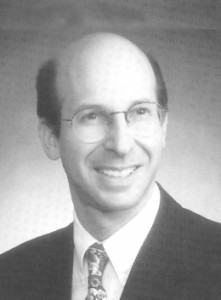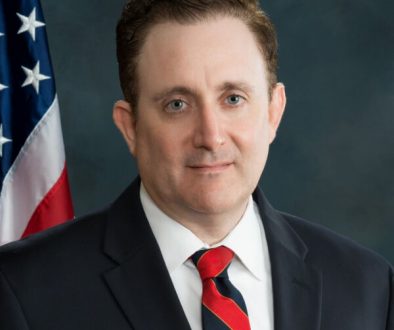Steve Kaufman on animal-free research
An assistant professor of ophthalmology, Dr Kaufman explains that learning ophthalmic surgery does not require practicing on animals.
 Dr Stephen Kaufman graduated from Yale University in 1981, where he received several awards of distinction before completing his medical studies at Case Western Reserve University School of Medicine in 1985. He then went on to specialise in ophthalmology at New York University Department of Ophthalmology. Dr Kaufman is currently an Assistant Professor of Ophthalmology, Case Western Reserve University School of Medicine in the US, and he has published many articles in the scientific literature.Dr. Kaufman has been co-chair of the Medical Research Modernization Committee (MRMC) since 1986 until the present time, and he has provided several expert witness statements in legal challenges involving the use of animals in scientific research. The MRMC is a national health advocacy group in the USA composed of physicians, scientists and other health care professionals who evaluate the benefits, risks and costs of different health care and medical research methods and technologies. The organisation has produced some excellent publications, one of which, ‘“A Critical Look at Animal Experimentation”
Dr Stephen Kaufman graduated from Yale University in 1981, where he received several awards of distinction before completing his medical studies at Case Western Reserve University School of Medicine in 1985. He then went on to specialise in ophthalmology at New York University Department of Ophthalmology. Dr Kaufman is currently an Assistant Professor of Ophthalmology, Case Western Reserve University School of Medicine in the US, and he has published many articles in the scientific literature.Dr. Kaufman has been co-chair of the Medical Research Modernization Committee (MRMC) since 1986 until the present time, and he has provided several expert witness statements in legal challenges involving the use of animals in scientific research. The MRMC is a national health advocacy group in the USA composed of physicians, scientists and other health care professionals who evaluate the benefits, risks and costs of different health care and medical research methods and technologies. The organisation has produced some excellent publications, one of which, ‘“A Critical Look at Animal Experimentation”  and may be known to some of our readers.
and may be known to some of our readers.Antidote Europe (AE): At what point in your medical or pre-medical studies did you become aware of the limitations of the animal model?
Dr Stephen Kaufman (SK): It was a gradual process. I had always been uncomfortable with the ethics of animal experimentation, and I was aware that there were scientific problems with much research. During my internship in New York City, Dr. Murry Cohen contacted me, and his thoughts about animal models, as well as the literature to which he directed me, helped me understand the scientific shortcomings of animal modeling.
AE: Were you able to complete your specialist training as an ophthalmologist without conducting animal research? Describe any obstacles that you encountered.
SK: Ophthalmic surgery, as with other kinds of surgery, is largely learned by working with patients under the watchful eyes of experienced surgeons. The resident-in-training gradually takes on more responsibilities as the skill level develops. There is no need to practice on animals, and indeed there was never such an opportunity during my training.
AE: Briefly describe the origins of the MRMC, which you helped to create.
SK: The MRMC was a brainchild of Alice Herrington, then president of Friends of Animals, now deceased. Ms. Herrington was convinced of a need for a medical group, independent of the animal protection movement, which could raise scientific objections to vivisection. She and Dr. Richmond Hubbard started the MRMC, and Dr. Murry Cohen became very involved early in its history. Shortly thereafter, Murry recruited me, and together we were the main forces behind the MRMC for many years.
AE: What do you consider to be your biggest success in terms of exposing the limitations of animal research?
SK: I think our greatest exposure was an article in the February 1999 issue of Scientific American that I coauthored with Dr. Neal Barnard, president of Physicians Committee for Responsible Medicine. I think we made many important contributions, particularly through our booklet “A Critical Look at Animal Experimentation” and the Perspectives on Medical Research monograph series.
AE: Are there any issues not covered in the interview that you would like to address?
SK: I don“t think a very strong case can be made that animal models have never assisted in medical progress or that they will invariably be useless in the future. I do think there is compelling historical and contemporary evidence that animal models are unnecessary for medical progress. In addition, they have been and remain frequently misleading, and their overall scientific value is dubious. Animals are used for purposes in medicine and medical science other than animal models of human conditions, including toxicity testing, reservoirs for infectious organisms, and tissue transplantation. For many of these uses, nonanimal methods have been replacing or should replace animal uses. For those uses for which comparable or superior nonanimal methods are not currently available, it is likely they would be developed if animal use were not an option, since necessity is the mother of invention.




